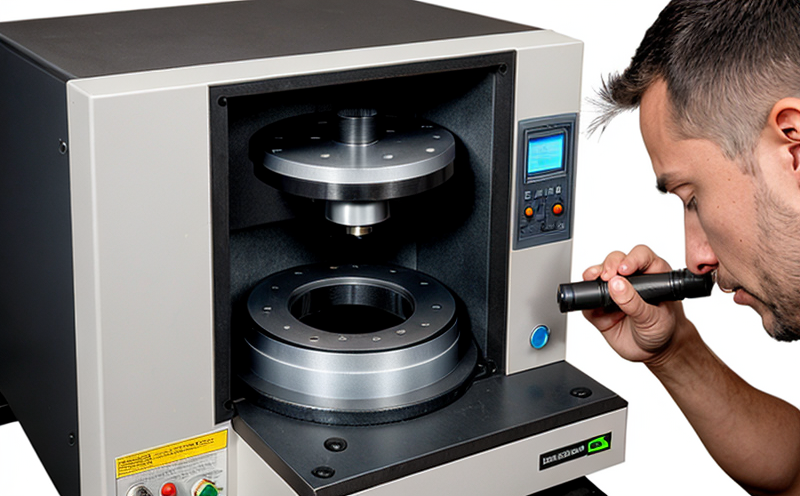ISO 945 Microstructure of Cast Iron Determination
The ISO 945 standard provides a detailed methodology for determining the microstructure of cast iron. This critical procedure is essential in quality management and compliance, ensuring that manufactured parts meet stringent industry standards. Cast iron is widely used across various sectors such as automotive, aerospace, and construction due to its excellent wear resistance, compressive strength, and machinability.
The process involves several key steps: sample preparation, etching, and analysis under a light microscope or scanning electron microscope (SEM). Proper specimen preparation ensures accurate microstructure assessment. The technique relies on precise etching agents such as nital solution (nitric acid with ethanol), which selectively dissolves certain phases of the cast iron, exposing the grain boundaries for detailed observation.
The primary objective is to identify and classify different microstructural features like pearlite, ferrite, cementite, and graphite flakes. By adhering strictly to ISO 945, quality managers can ensure that any discrepancies in the microstructure are captured early in the production process, leading to enhanced product reliability.
Once the sample is prepared and etched, it undergoes visual inspection using a light microscope or SEM. The technician must be trained in recognizing the various microstructural features under different magnifications. This step-by-step approach ensures that every aspect of the cast iron’s microstructure is captured accurately, providing valuable insights for quality assurance and compliance.
The importance of this test cannot be overstated, especially in sectors where precise material properties are critical. By adhering to ISO 945, manufacturers can ensure their products meet international standards, enhancing trust among customers and regulatory bodies.
Applied Standards
| Standard Name | Description |
|---|---|
| ISO 945:1973 | Method of determining the microstructure of cast iron, including its phases and morphology. |
| ASTM E407-20 | American Society for Testing and Materials standard for the examination of metallographic specimens. |
| EN 10385:2019 | European Norm for the inspection of cast iron parts. |
| IEC 60404-10:2017 | International Electrotechnical Commission standard for metallographic examination. |
The application of these standards ensures uniformity and consistency in the interpretation and reporting of microstructural features. Compliance with ISO 945 is crucial for maintaining quality control processes that are internationally recognized, ensuring reliability and trustworthiness in product performance.
Quality and Reliability Assurance
The process outlined by ISO 945 Microstructure of Cast Iron Determination plays a pivotal role in the quality assurance framework. By rigorously following this standard, manufacturers can ensure that their products meet or exceed international standards. This includes not only the mechanical properties but also the microstructural integrity which is critical for long-term performance.
Quality managers and compliance officers play a crucial role in implementing these tests. They must ensure that every step of the process adheres to ISO 945, from sample preparation to final analysis. The use of advanced instruments such as SEMs provides deeper insights into microstructural features, enabling more precise identification and classification.
The reliability of the results is further enhanced by the detailed reporting required under this standard. This includes not only photographic documentation but also quantification of different phases present in the cast iron. Such comprehensive documentation supports traceability and facilitates easier troubleshooting if issues arise during production or use.
In addition to internal quality control, these tests are often part of a broader compliance framework that ensures products meet regulatory requirements. For instance, in the automotive sector, adherence to ISO 945 can be crucial for meeting safety standards. In aerospace applications, microstructure integrity is paramount due to the high stresses involved.
By investing in thorough testing and robust quality assurance processes, manufacturers can build a reputation for reliability and innovation. This not only enhances customer trust but also opens up new market opportunities by differentiating their products in competitive markets.
International Acceptance and Recognition
- ISO 945: Widely recognized across the globe, this standard is essential for any manufacturer dealing with cast iron parts.
- ASTM E407: Accepted in North American markets, providing additional validation of microstructural analysis.
- EN 10385: Recognized within the European Union and its member states, ensuring compliance across diverse industries.
- IEC 60404-10: Integral to the international standardization process for electrical and electronic equipment involving metal components.
The combination of these standards ensures that any manufacturer adhering to ISO 945 will be meeting a globally accepted protocol. This is particularly important in sectors where cross-border trade or collaboration is common, as it simplifies compliance processes across different regulatory environments.





